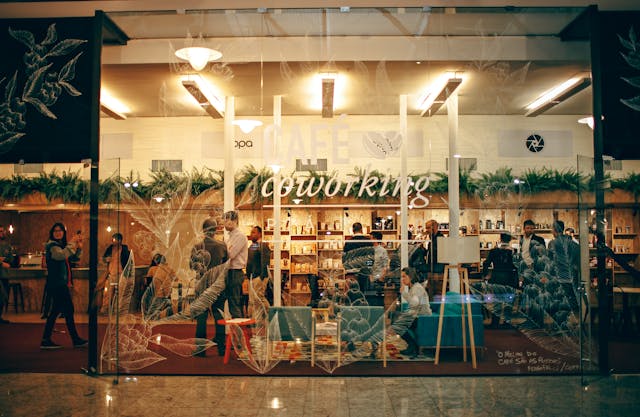Traditional organizational charts look increasingly obsolete in our interconnected world. Over the past three years, my company has evolved from a conventional in-office team to a dynamic network of 47 core employees and over 200 regularly engaged freelancers across six continents. This elastic structure didn’t emerge from abstract theory but from solving real business challenges through trial and error. Here’s how we make it work day-to-day.
The Framework of Our Elastic Model
Our talent ecosystem operates on three concentric circles. The innermost circle consists of our full-time strategic team—the keepers of company culture and long-term vision. These 47 individuals handle core functions like product direction, client relationships, and financial management. They’re the constants in our equation.
The middle circle contains our “go-to” freelancers—about 120 specialists we engage repeatedly across projects. These professionals understand our workflows deeply but value their independence. A UX designer in Buenos Aires has contributed to twelve consecutive projects over two years, while a copywriting team in South Africa handles all our client communications. We invest in these relationships with annual retainers that guarantee first right of refusal on their time.
The outer circle comprises our on-demand talent pool—another 80+ specialists we tap for very specific needs. This includes niche experts like a blockchain legal consultant in Singapore and a Mandarin-speaking social media strategist in Taipei. These professionals might work with us only once or twice annually but provide irreplaceable value when their unique skills are required.
Operationalizing the Elastic Workforce
Project launches begin with a “capability mapping” exercise rather than role assignments. We start by defining what needs to be accomplished, then assemble the precise combination of skills required—regardless of whether those skills come from employees or freelancers. A recent client campaign involved our internal strategist, a freelance data scientist in Prague, and a video production team in Nairobi working in coordinated sprints.
Communication flows through customized channels for each collaboration type. Full-time team members use Slack for ongoing dialogue, while freelancers access project-specific Microsoft Teams environments. This separation prevents information overload for temporary contributors while maintaining transparency. Critical updates get mirrored across both platforms automatically through Zapier integrations.
Knowledge transfer happens through our “Living Playbook”—a Notion workspace that documents every process, decision rationale, and client history. When onboarding freelancers, we grant tiered access to relevant sections rather than overwhelming them with entire company archives. A graphic designer receives brand guidelines and current project briefs but doesn’t need to see our financial modeling templates.
The Tools That Bind Us Together
Our technical infrastructure prioritizes interoperability over brand loyalty. Instead of locking into one ecosystem, we use best-in-class tools that communicate through APIs:
Project management happens in ClickUp, chosen for its flexible views that accommodate different work styles. Developers track tasks in list view, designers prefer boards, and executives monitor progress through dashboards. Custom fields ensure freelancers see only relevant project dimensions.
File collaboration centers on Google Drive but with a twist—we use the comment system as a lightweight project management tool. When a freelance animator in Seoul uploads a storyboard, team members add timestamped comments that automatically generate follow-up tasks in ClickUp.
Time tracking uses Toggl Track with project codes that align to our accounting system. Freelancers log hours through a simplified interface that hides sensitive client billing rates. The data feeds into automated weekly reports that help us spot bottlenecks across the elastic workforce.
Payments flow through Deel, which handles international contracts, compliance, and currency conversion seamlessly. The platform’s approval workflows ensure freelancers get paid promptly while maintaining our financial controls. Seeing consistent payment history has improved our standing in the freelance community.
Cultivating an Elastic Culture
Trust forms the foundation of our distributed model. We build it through small tests before major commitments—a trial project before a retainer agreement, a single chapter before commissioning an entire ebook. A content writer in Lisbon proved her reliability through three small assignments before becoming our go-to for major client deliverables.
Transparency replaces supervision in our elastic structure. All team members—permanent and temporary—see the same company metrics dashboard showing project health indicators, client satisfaction scores, and financial benchmarks. This shared visibility aligns efforts without micromanagement.
Community building happens through monthly “skill share” sessions where anyone can teach or learn. A recent session had our full-time CTO learning Instagram Reels tricks from a 22-year-old freelance creator, while that same creator later attended the CTO’s workshop on blockchain fundamentals. These exchanges foster mutual respect across employment categories.
Recognition follows the contributor rather than the contract type. Our weekly shoutouts highlight exceptional work regardless of whether it came from a decade-long employee or a first-time freelancer. Compensation similarly rewards impact—our top freelance writer earns more per project than several full-time staff members.
Overcoming Elastic Challenges
Knowledge silos posed an early threat as information lived in individual inboxes and hard drives. We defeated this by implementing Guru, an AI-powered wiki that captures institutional knowledge proactively. Now when anyone answers a question or makes a decision, the system prompts them to document it in our searchable knowledge base.
Cultural consistency required intentional effort across 29 countries. We developed “cultural translation” guidelines that help interpret feedback across regions. What reads as harsh criticism in New York might register as mild concern in Tokyo—we train team members to calibrate their communication for global colleagues.
Security concerns led us to implement a zero-trust access model. Freelancers receive precisely scoped permissions that expire with their contracts. Our IT team uses automated systems to deprovision access within one hour of project completion, preventing orphaned accounts from becoming security risks.
Time zone math nearly derailed several projects before we implemented a standardized “availability window” system. Everyone declares their core working hours in a shared calendar that automatically visualizes overlaps. Critical meetings get scheduled only in intersecting green zones, while asynchronous communication handles the rest.
Measuring Elastic Success
Our metrics evaluate both business outcomes and team health:
Utilization rates track how effectively we match skills to needs. We aim for 85% of freelance capacity to be billable—too low suggests poor planning, too high indicates insufficient bench depth.
Time-to-proficiency measures how quickly new contributors become productive. For repeat freelancers, this has decreased from 14 days to just 3 as our onboarding systems improve.
Talent return rate shows which freelancers choose to work with us again—currently at 78% for those who complete two projects, indicating strong relationship satisfaction.
Innovation input tracks how many new ideas originate from elastic team members—surprisingly, freelancers contribute 42% of our process improvements despite representing only 30% of total hours worked.
The Future of Our Elastic Experiment
We’re currently piloting “elastic pods”—pre-assembled teams of freelancers who already have working relationships. One pod consisting of a technical writer, illustrator, and instructional designer recently delivered a complex training program 30% faster than our traditional team structure could have.
AI augmentation is transforming how we work with freelancers. We now provide all temporary contributors with customized ChatGPT assistants trained on our playbooks and style guides. This has reduced onboarding time while improving output consistency across our elastic workforce.
The lines between employee and freelancer continue blurring. Several top freelancers now have “fractional employment” contracts giving them benefits in exchange for guaranteed availability. Others have become talent scouts, recommending vetted professionals from their own networks to join our ecosystem.
This elastic structure isn’t without its complexities, but the benefits far outweigh the challenges. We’ve increased project capacity by 60% without increasing fixed costs, accessed world-class talent regardless of geography, and built an organization resilient to economic fluctuations. Most importantly, we’ve created opportunities for hundreds of professionals to do meaningful work on terms that honor their expertise and lifestyle preferences. That’s the real power of elasticity—not just stretching resources, but creating space for everyone to thrive.








